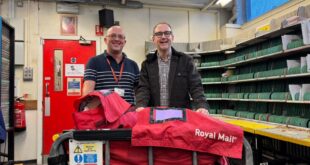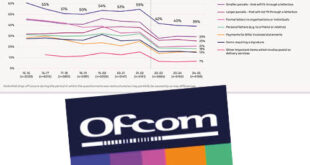The Royal York Hotel is making strides to becoming a net zero, carbon neutral building. ‘There’s no question that the Royal York is deeply embedded in the heart of the community,’ says general manager Edwin Frizzell. ‘Net zero is part of our effort to position [it] for the next 100 years.’HUBERT KANG
Guests who check in to Toronto’s Fairmont Royal York Hotel this fall may want to check out what the hotel is doing about climate change.
The iconic 94-year-old landmark is getting a $46.5-million retrofit to reduce its carbon emissions, with the ultimate goal of becoming a net-zero, carbon-neutral building.
At least 80 per cent of carbon emissions from the Royal York’s operations, including heating, cooling, cooking, washing and cleaning systems, are expected to be reduced by the end of this year.
The Royal York’s owners, KingSett Capital, and the Fairmont chain that operates the hotel, are seeking to gain a Canada Green Building Council’s Zero Carbon Building Standards Certification later this year. While the work is well under way already, the hotel aims to publicly celebrate its net-zero status this November.
Buildings that achieve the council’s certification, which must be renewed annually, are recognized for minimizing their greenhouse gas emissions from all materials and operations as much as possible using today’s technology.
The Royal York’s remaining carbon will be reduced for now by purchasing carbon offsets – paying for green electricity to be used in other buildings and projects. While not a perfect solution, purchasing carbon offsets is widely recognized as a way to transition to net zero until technology is advanced enough to remove all greenhouse gas emissions in old buildings.
“We started working on this retrofit back in 2021, with an inventory of all the carbon the hotel produced and its sources,” says Steven Gross, vice-president, multiresidential and hotels at KingSett. The physical retrofit began shortly after KingSett and Fairmont Royal York reached an agreement last October with the Canada Infrastructure Bank (CIB) to finance $38-million toward the retrofits.
Mr. Gross and the hotel’s senior management say there are several reasons for such an aggressive effort to turn the Royal York into a net-zero building.
One is that doing so aligns with Canada’s overall goal of becoming net zero by 2050. The building sector is the third-largest source of greenhouse emissions, contributing 13 per cent of the national total, with 78 per cent of this contribution coming from space and water heating.
“It’s a good example of the kind of buildings we have to deal with to be serious about retrofitting in Canada – nearly 100 years old and definitely not built with the environmental features we have in mind today,” says Warren Mabee, associate dean and director of the School of Policy Studies at Queen’s University in Kingston.
There are some 482,000 commercial and public buildings in Canada, and KingSett Capital is a significant player in this sector, with some $17.5-billion in assets under management.
Becoming carbon neutral is an important part of the company living up to its overall environmental, social and governance (ESG) objectives – which many institutional investors demand, Mr. Gross says.
“We’ve set targets across our whole portfolio of properties – a 67-per-cent overall reduction in carbon emissions by 2035. It’s nice to plan and talk about things you’re going to do in the future, but we like action now,” he says.
Retrofitting the Fairmont Royal York also makes a statement for travellers and event planners who may be booking a wedding, bar or bat mitzvah, gala or convention and want an environmentally friendly hotel, says Edwin Frizzell, the Fairmont Royal York’s regional vice-president, Central Canada and general manager.
“We’re trying to set an example,” he says. Fairmont operates some 70 hotels around the world, with 20 in Canada.
:format(jpeg)/cloudfront-us-east-1.images.arcpublishing.com/tgam/IDFM3MOJGJHLNLXKH3YFMM3EVI.jpeg)
At least 80 per cent of carbon emissions from the Royal York’s operations, including heating, cooling, cooking, washing and cleaning systems, is expected to be reduced by the end of this year.Brandon Barre Photography/Handout
According to Booking.com’s 2023 Sustainable Travel Report, nearly two-thirds of 33,000 people surveyed in 35 countries say they would feel better about staying in a particular accommodation if it has a sustainable certification or label, while 59 per cent want to filter their search options to look for those with a sustainable certification.
Even before the current retrofit, the hotel made environmentally friendly moves, Mr. Frizzell says.
“We raise honeybees on our roof, set up a rooftop garden for our chefs, we eliminated the use of all single-use plastic at our property last year. The net-zero project is really a culmination of a number of steps we’ve taken, but it’s a pretty substantial one,” Mr. Frizzell says.
Overhauling a building like the 1,363-room Royal York is a complicated job. The hotel has managed to stay open even as the work has gone on, Mr. Frizzell notes.
One of the main elements of the $46.5-million reno is to change the Royal York’s heating and cooling systems. “It’s a project that pretty much affects everyone who works in the building and involves hundreds of contractors, changing around water storage and piping,” Mr. Frizzell says.
“We are essentially replacing all the systems in the hotel that require using steam as a power source [now coming from natural gas]. On the heating side, we’re converting to an electric power plant that is being built within the hotel,” he says. Roughly 60 per cent of electricity in Ontario is generated by nuclear or hydroelectric power, neither of which emit carbon dioxide.
“On the cooling side, we’re tapping into Toronto’s deep lake water cooling system,” Mr. Frizzell says. The system, which is the world’s largest of its type, draws water at a chilly 4 C from 83 metres deep in Lake Ontario and circulates it through the city to cool more than 130 buildings.
The net zero project is really a culmination of a number of steps we’ve taken, but it’s a pretty substantial one.”
— Edwin Frizzell, regional vice-president Central Canada and general manager at the Fairmont Royal York
The system, operated by Enwave, uses 75 per cent less energy than conventional air conditioning and cuts greenhouse gas emissions by 40,000 tonnes a year, equivalent to taking 40,000 cars off the road.
One of the challenges for this particular hotel is that unlike many hotels, the Royal York does its own laundry, which uses huge amounts of heat and energy. “It can be done, but it just makes things more complicated,” Mr. Frizzell says.
The steel-frame Royal York was opened in 1929 and expanded 30 years later. “The retrofit shows that even big landlords and property management companies are willing to make the investments in these older properties and keep them going,” Dr. Mabee says.
“It’s also a sign that they feel that these [environmental] technologies have matured to the point where they’re willing to make large investments. There are a lot of buildings in Canada that are going to need this kind of investment, and it’s not chump change,” he says.
“There’s no question that the Royal York is deeply embedded in the heart of the community,” Mr. Frizzell says.
“Net zero is part of our effort to position [it] for the next 100 years.”
Source link



